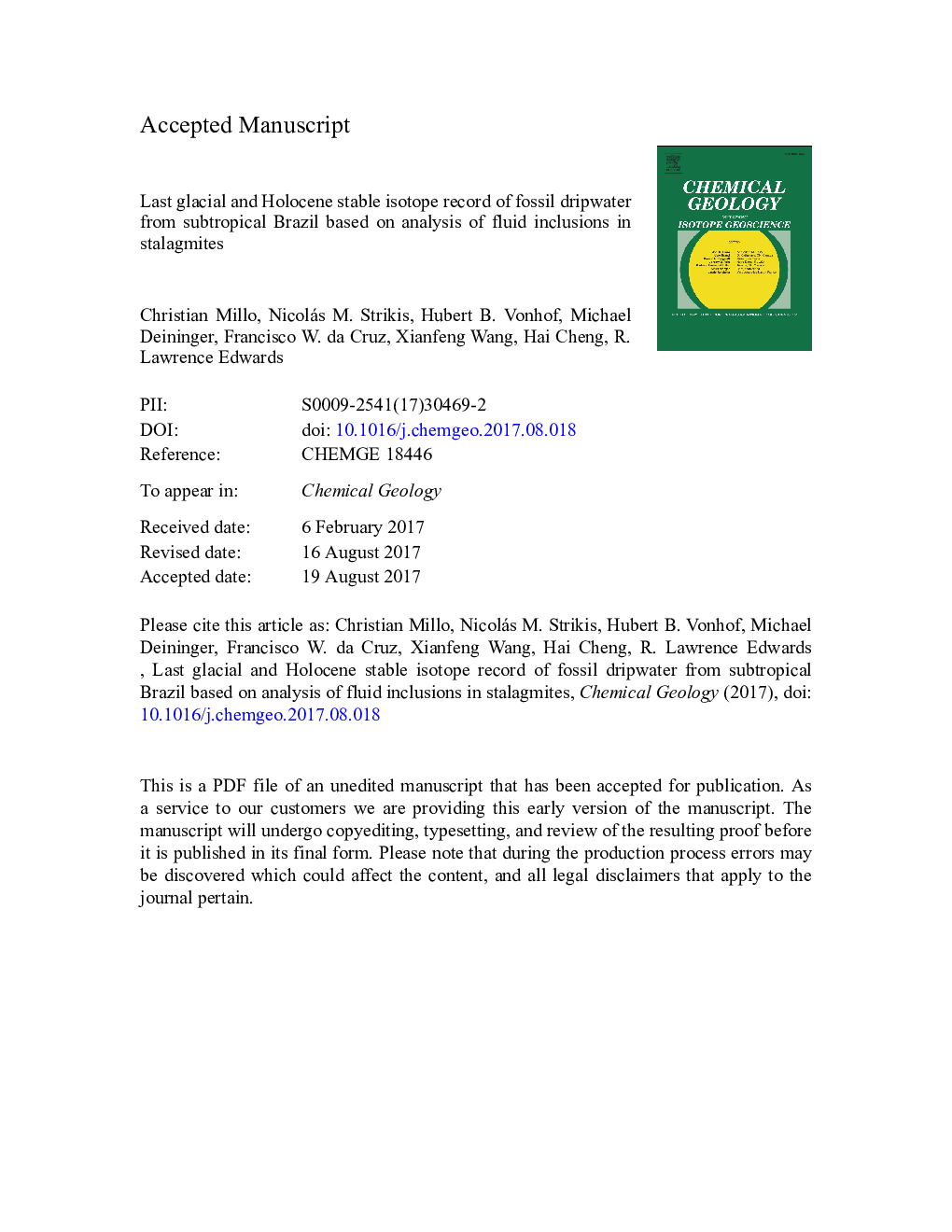| Article ID | Journal | Published Year | Pages | File Type |
|---|---|---|---|---|
| 5782718 | Chemical Geology | 2017 | 49 Pages |
Abstract
The stable isotope composition of fossil dripwater preserved in stalagmites fluid inclusions is a promising tool to reconstruct paleopluviosity in the tropics and subtropics. Here we present δD and δ18O records of fossil dripwater from two stalagmites collected in Botuverá Cave (subtropical Brazil), covering the last glacial period and the Holocene. The observed millennial-scale variability of fossil dripwater δD and δ18O values is of the order of 10 to 20â° and 1 to 3.5â° (V-SMOW), respectively. Fluid inclusion δD and δ18O values are higher than the weighted mean δD and δ18O values of modern precipitation, suggesting a possible intensification of extratropical cold surges during both the last glacial period and the Early Holocene, followed by a progressive Late Holocene transition towards modern pluviosity conditions. Fluid inclusions δ18O values vary in parallel with stalagmite δ18O values during the Holocene but not during the last glacial period. This suggests that the δ18O value of precipitation may not be the only dominant factor controlling the δ18O values of the analyzed stalagmites. Isotope disequilibrium effects arising from Prior Calcite Precipitation (PCP) possibly affected stalagmites δ18O values to a greater extent than previously considered, though this effect does not bias non-quantitative paleopluviosity reconstructions based on stalagmite δ18O values. Isotope-based paleotemperature calculated for the Late Holocene matches modern cave temperature (19 °C) within ± 2.4 °C. This encourages further application of isotope analyses of fluid inclusion for climatic reconstructions.
Related Topics
Physical Sciences and Engineering
Earth and Planetary Sciences
Geochemistry and Petrology
Authors
Christian Millo, Nicolás M. Strikis, Hubert B. Vonhof, Michael Deininger, Francisco W. Jr, Xianfeng Wang, Hai Cheng, R. Lawrence Edwards,
